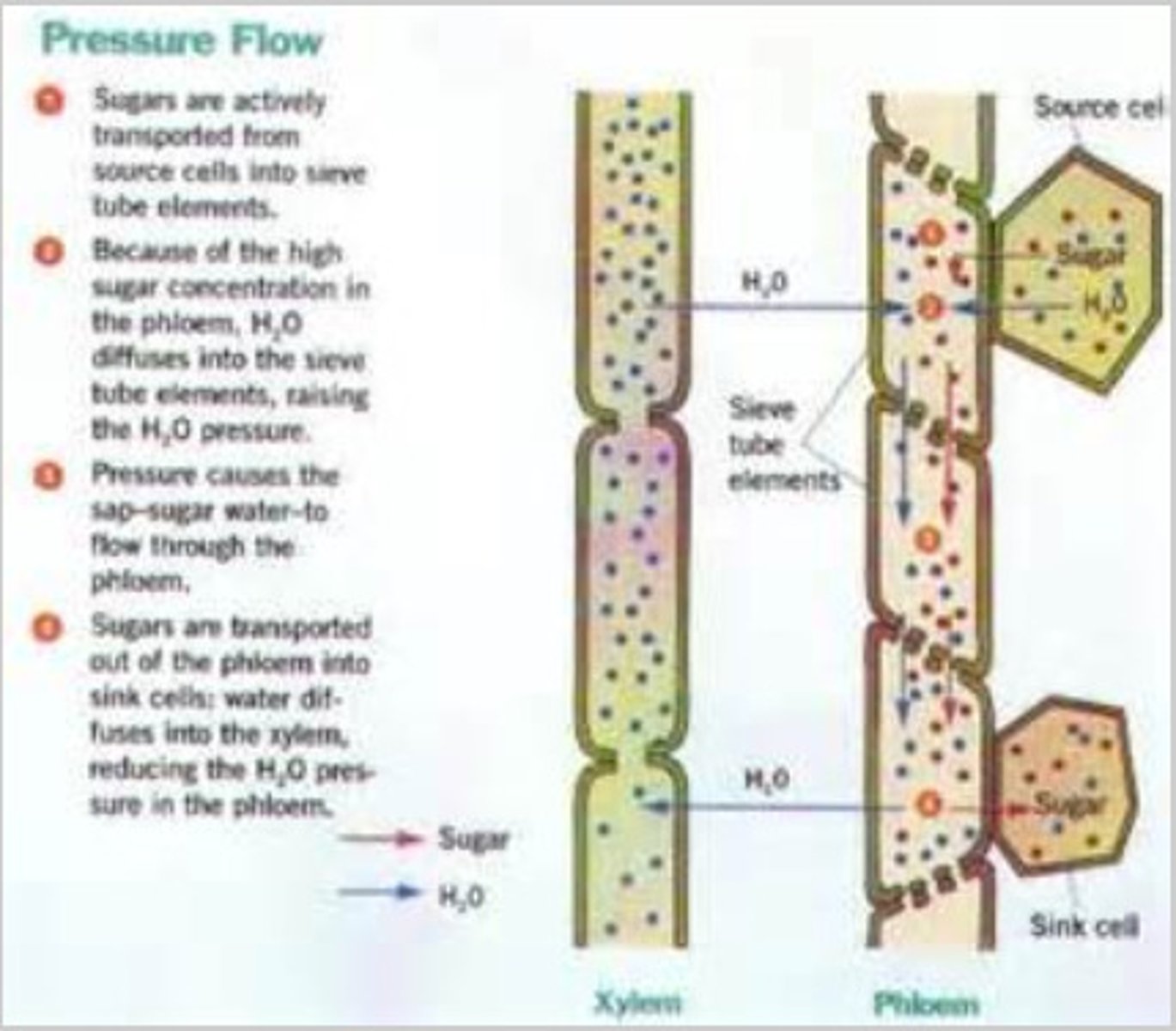k) l) Production of erythrocytes and neutrophils, Xylem and Phloem
1/12
There's no tags or description
Looks like no tags are added yet.
Name | Mastery | Learn | Test | Matching | Spaced |
|---|
No study sessions yet.
13 Terms
What is the name of stem cells differentiating into erythrocytes?
Erythropoiesis
Erythropoiesis Process
1) The common stem cell in bone marrow is multipotent
2) Changes have occurred and this cell can now only form an erythrocyte
3) Haemoglobin builds up in the cytoplasm
4) The nucleus is ejected
5) Further changes form a mature erythrocyte (such as the cell shape into a biconcave shape, and an elastic membrane to allow erythrocytes to squeeze through narrow capillaries)
How do stems differentiate into neutrophils?
The same stem as erythropoiesis, except main changes that occur include:
Indentations formed in the nucleus, giving it a lobed structure
Granules accumulated (these are lysosomes that contain hydrolytic enzymes)
A flexible shape and a flexible nuclear membrane is formed. This allows neutrophils to fit between capillary cell walls and to form pseudopodia
What is pseudopodia?
The extensions of the cytoplasm that engulf foreign bodies during phagocytosis
Why is it important that stem cells can differentiate into neutrophils?
Neutrophils are the first white blood cell to arrive at an infection site.
They exit the blood through gaps in the capillary wall and destroy the foreign bodies via phagocytosis, digesting them with their hydrolytic enzymes.
Parenchyma definition
Tissue in a functional organ
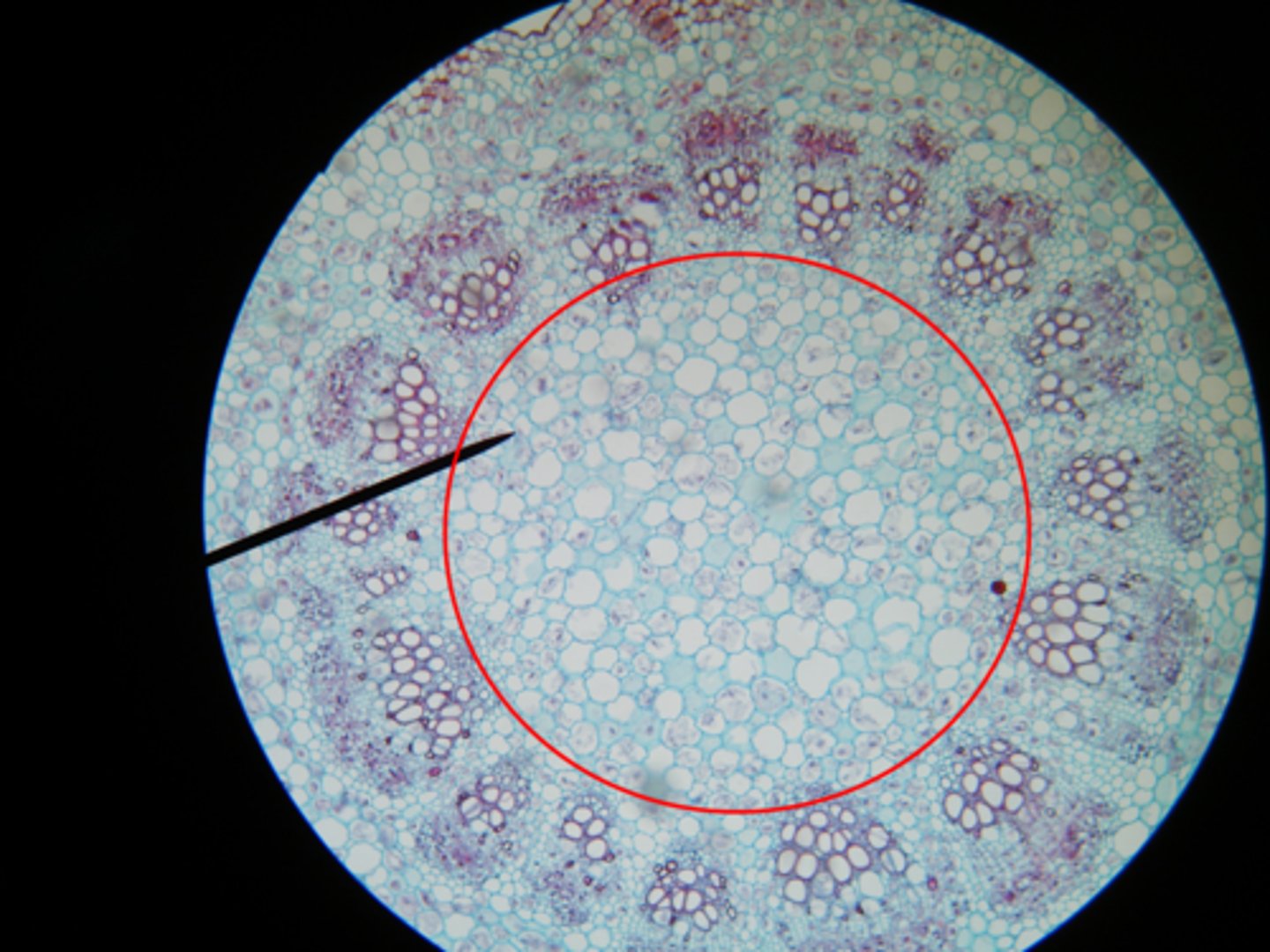
Sclerenchyma definition
Strengthening tissue in a plant, formed from cells with thickened (typically lignified) walls
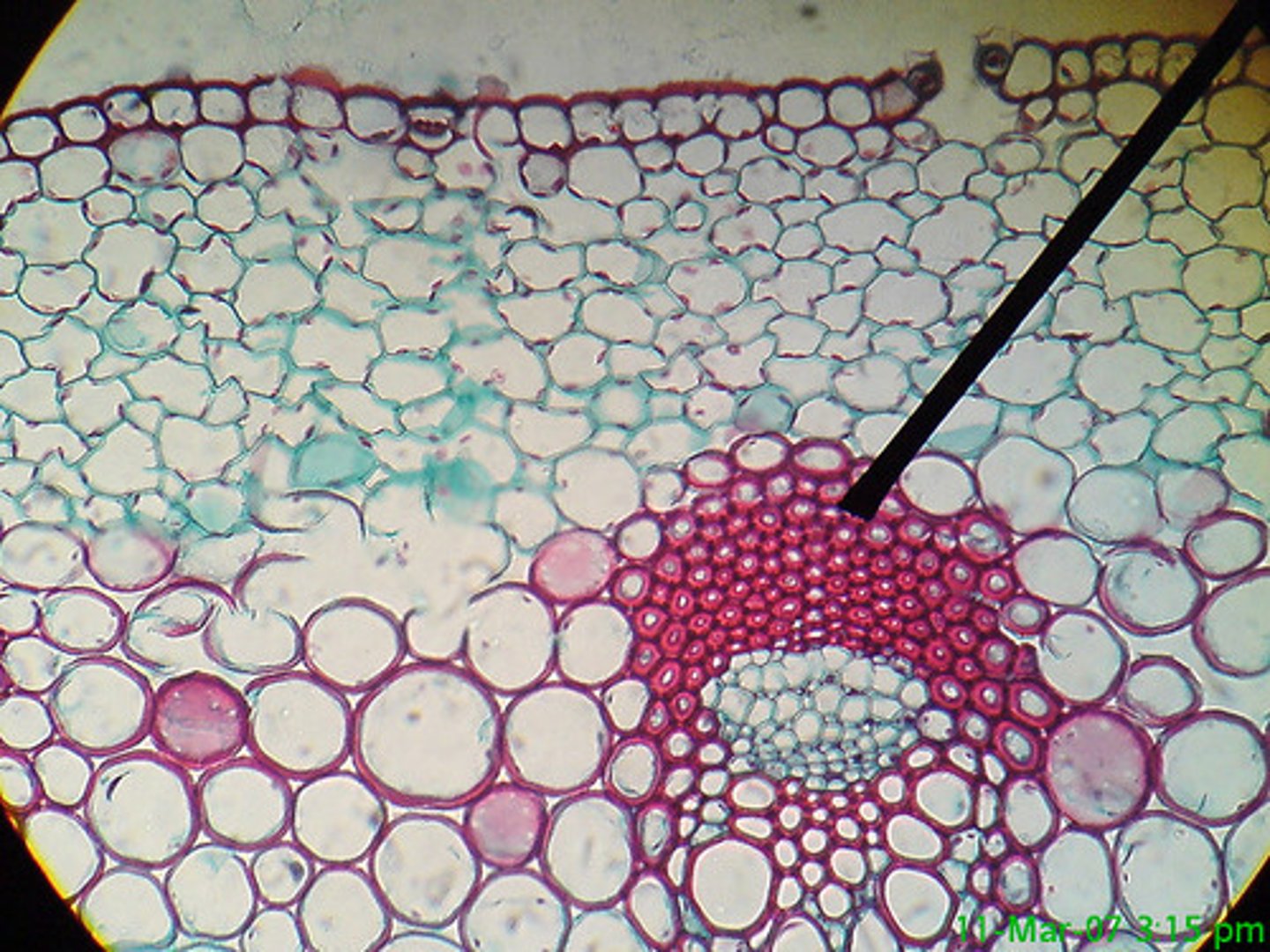
Collenchyma definition
Tissue strengthened by the thickening of cell walls, as in young shoots
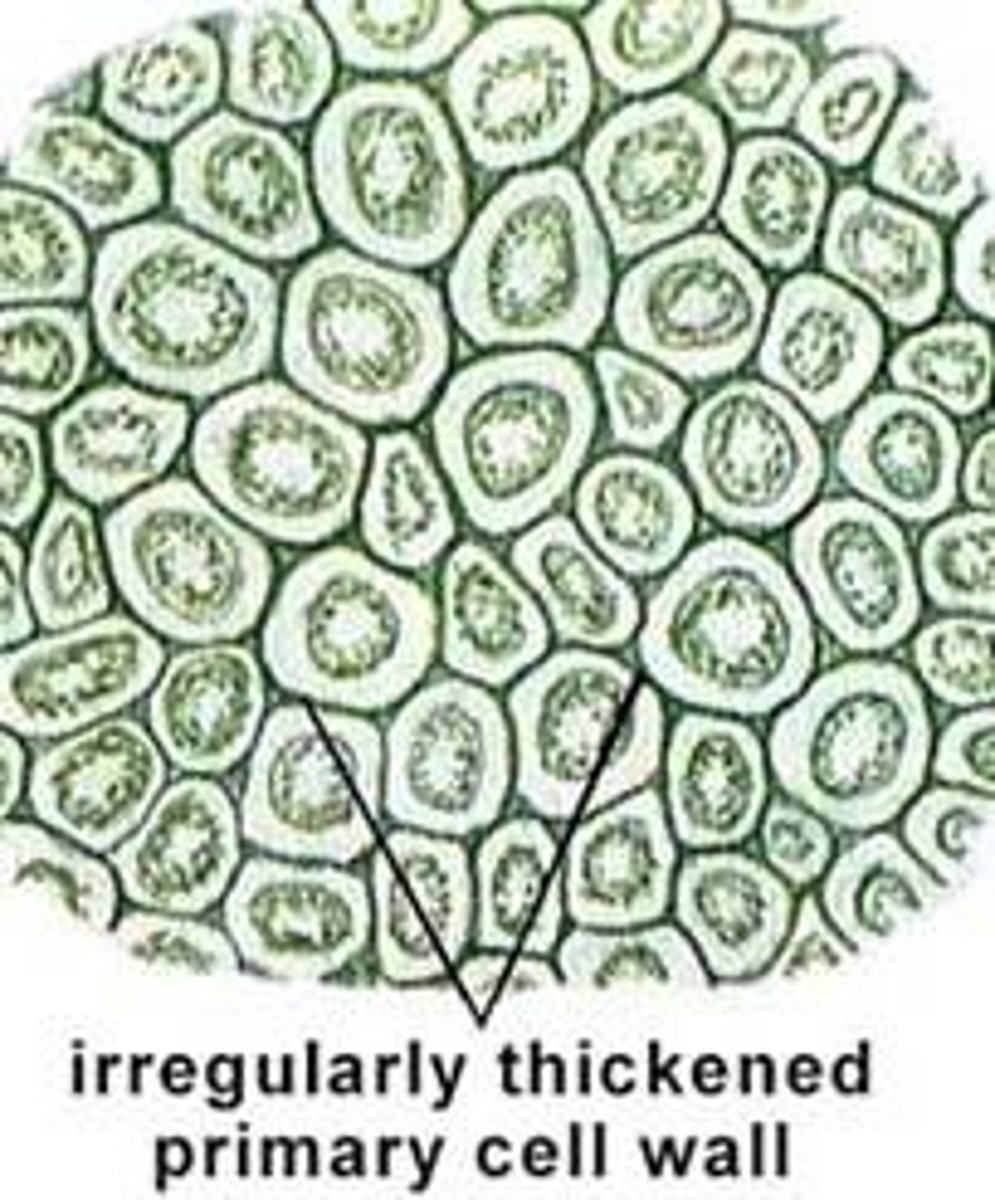
Xylem and phloem are formed from what?
Formed from meristem cells such as cambium
Meristem cells undergo differentiation
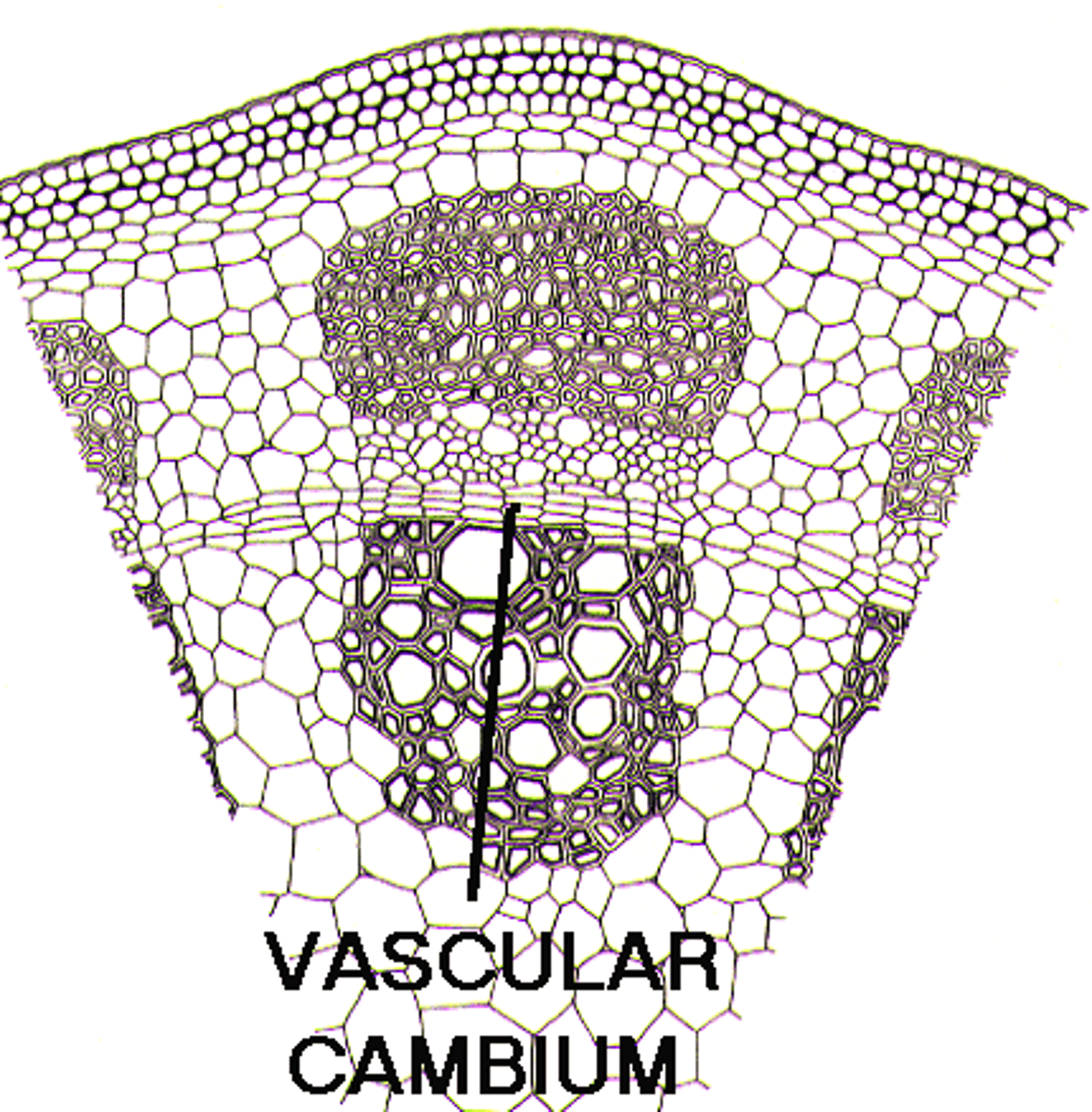
What does lignin do in xylem?
Walls are reinforced with lignin.
Lignin provides strength against negative pressure, and waterproofs the cell.
Because of this, the cell dies, creating a hollow tube.
It limits lateral movement of water and allows adhesion.
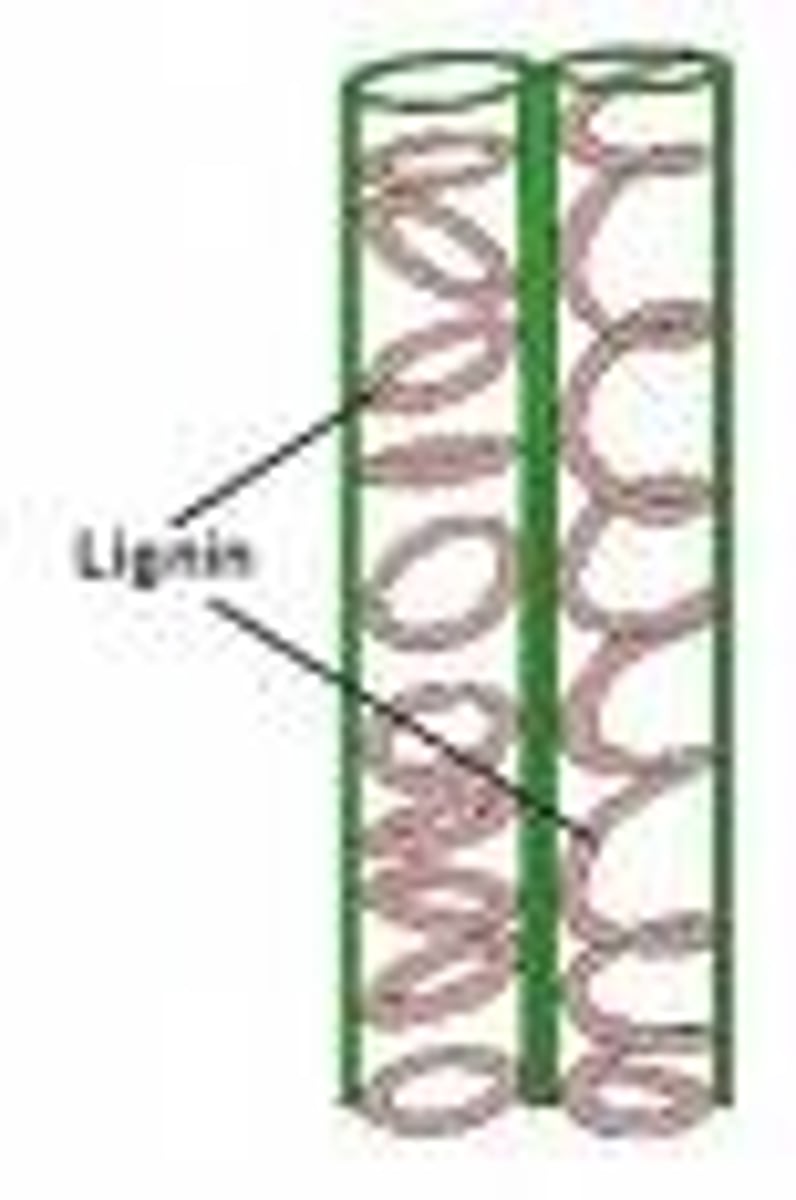
Xylem Structure
Dead parenchyma cells
No end walls (they break down)
Hollow tubes to form a continuous column
Moves minerals and water up the plant
Pits allow for the lateral movement of water to bypass a blockage, supplying water to other tissues
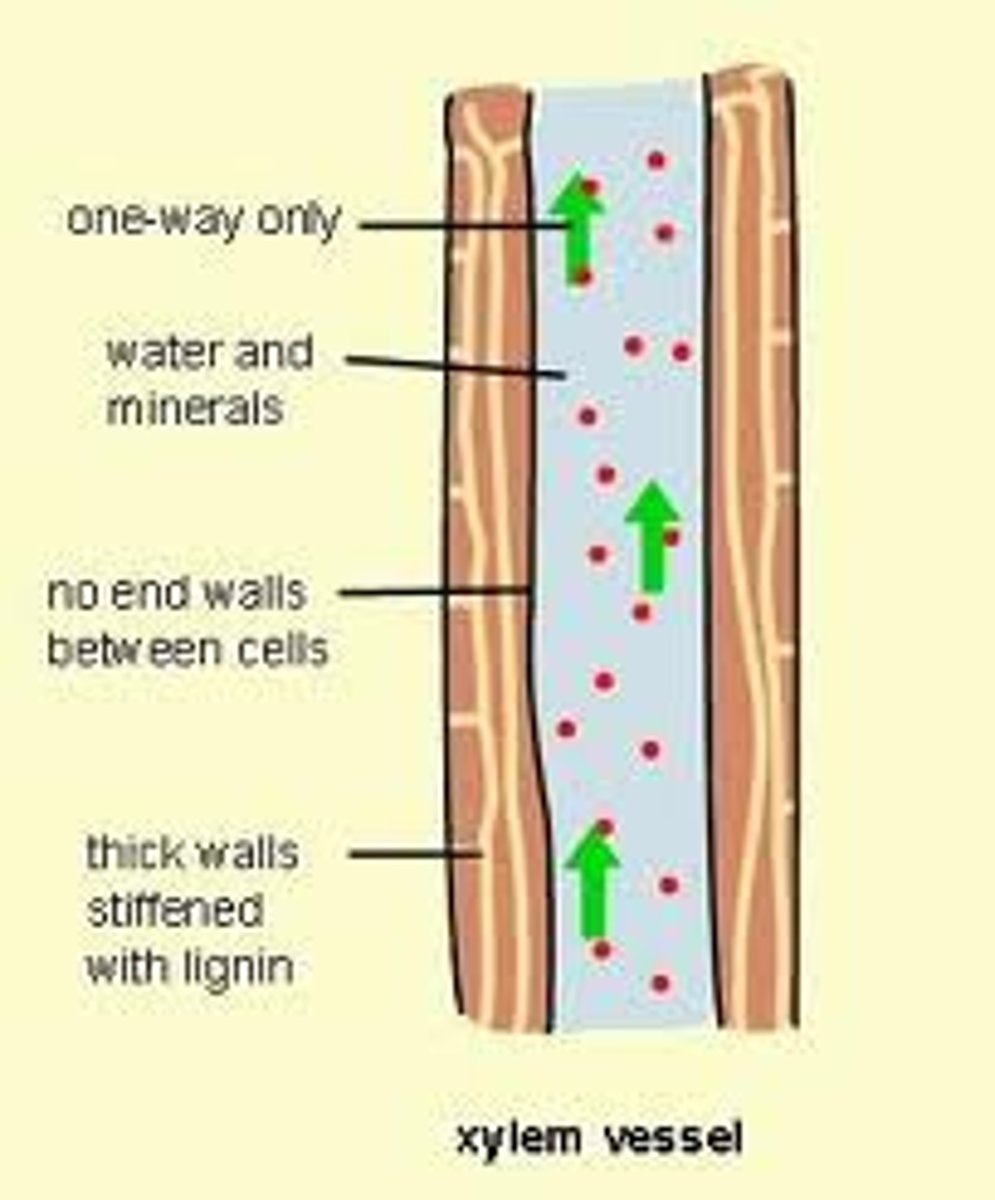
Phloem Structure
Alive parenchyma cells
Ends don't break down but form sieve tube elements and companion cells
Plasmodesmata
Transports assimilates such as sucrose and amino acids
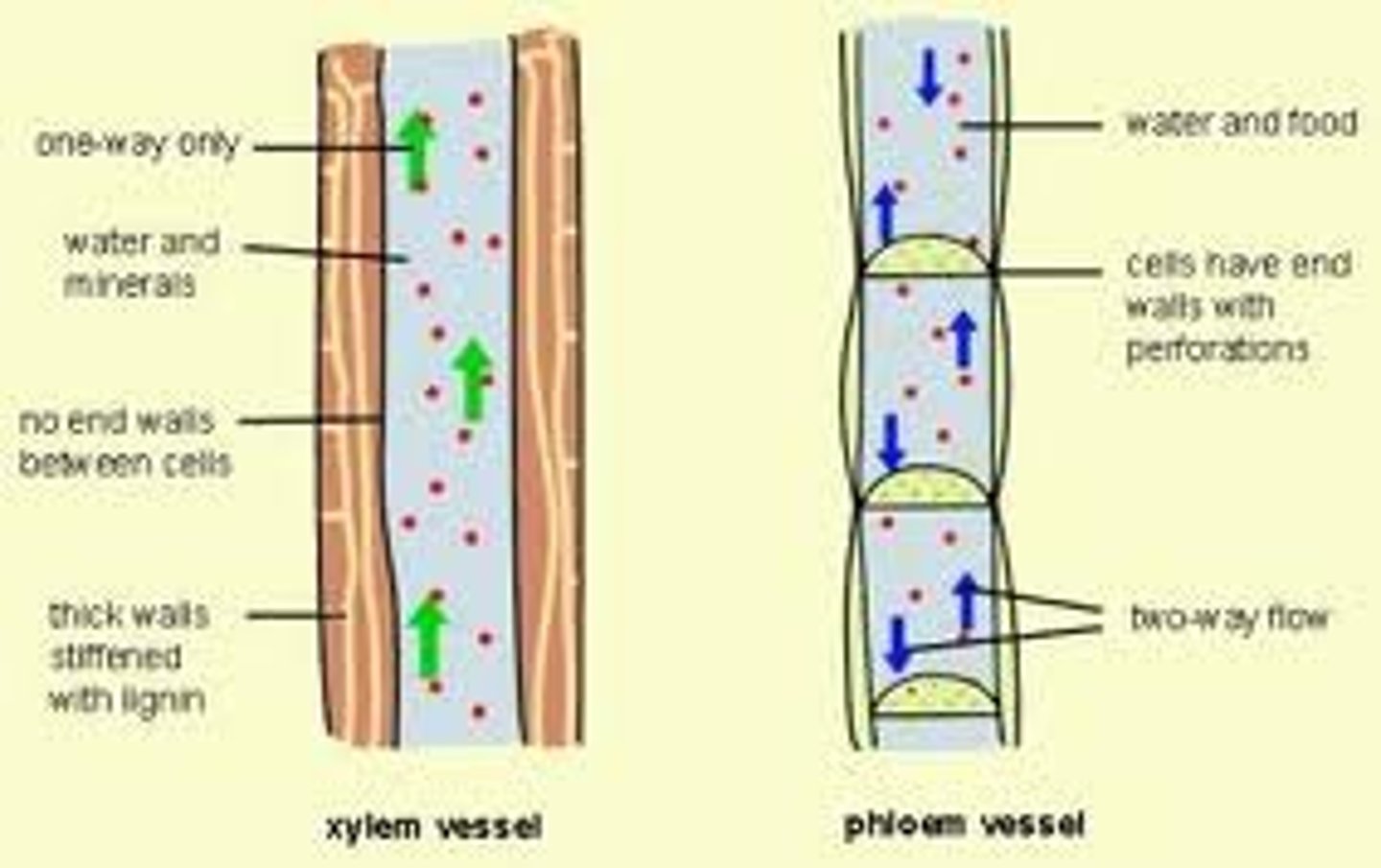
What do companion cells do?
They are metabolically active and provide ATP and proteins to the sieve tube elements, of which lack the organelles to do so.
